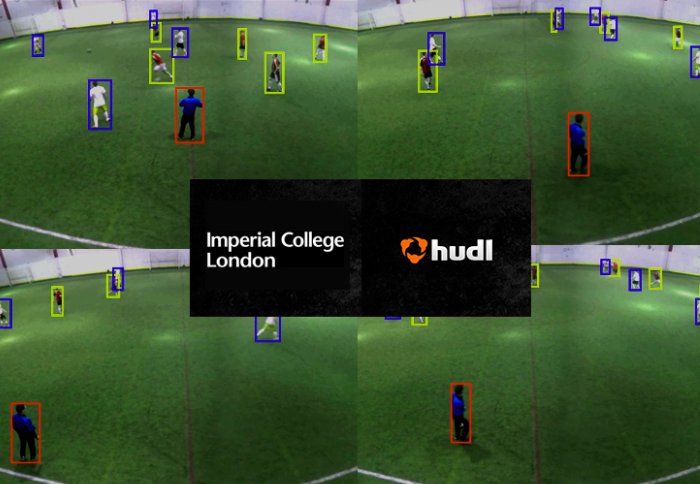
Images from Imperial's research collaboration with Hudl

Ever wanted to improve your golf swing or move your Sunday morning football team up the league? Well, you're in luck.
Imperial have been working with the rapidly expanding US software company Hudl to improve its sports tracking technology. Used by thousands of professional and amateur sports teams globally, the software uses video recording to track the movement of players at games or training sessions and allows coaches to document vital statistics. Coaches can then interactively annotate the footage and forward it to players to use to perfect their performance or create a showcase of their skills.
To make these products even more accurate and therefore successful, researchers at Imperial’s Electrical and Electronic Engineering Department have been working with the company to develop new algorithms and computer software, and overcome technical challenges such as gaps between observations, dynamic appearance changes of players (e.g. due to different viewpoints and light conditions) and limited resolution of images.
The project was recently completed by the Computer Vision and Learning Lab, led by researcher Dr. Rigas Kouskouridas and the laboratory’s head, Dr. Tae-Kyun Kim. Dr. Kim’s Lab pursues active research in machine learning for Vision, Human-Computer Interaction (HCI) and Robotics and has had successful research projects dealing with the intricacies of hand gesture and face recognition, multiple object tracking, active robot vision and activity recognitions.
“Automatic multi-object tracking is a challenging problem as target objects often disappear and re-appear in the scenes and are occluded by other objects,” said Dr Kim. “Our novel solution effectively manages numerous piece-wise tracks and automatically associates them into semantically meaningful object tracks. I am happy to see that our developed tracking software has been successfully applied to a real-world problem”.
The Computer Vision and Learning Lab is just one part of Imperial’s Robotics research network, The Imperial Robotics Forum, which involves 21 laboratories, more than 30 principal investigators and almost 150 researchers and PhD students. The forum forms the largest network of its kind in Europe with capabilities covering the 4 main areas of Perception and Cognitive Robotics, Autonomous Systems, Healthcare and Assistive Robotics and Service and Vehicle Robotics.
The development of robotic technologies has considerable implications across all industries, with a recent report by McKinsey estimating that the application of robotics and autonomous systems (RAS) could generate a global economic impact of $1.9 trillion to $6.4 trillion per year by 2025. The market size for robots in non-military sectors also has the potential to swell to around £70bn a year by that date.
Hudl’s technology has already proved itself wildly successful even within the semi-professional arena. The company’s strong following in American football – considered a growth industry in the US – has helped it secure USD$72.5M of investment in its most recent fund-raising round. Imperial are proud to support the development of small companies making such a big impression in the tech sphere.
Article text (excluding photos or graphics) available under an Attribution-NonCommercial-ShareAlike Creative Commons license.
Photos and graphics subject to third party copyright used with permission or © Imperial College London.
Reporter
Naomi Black
Enterprise

Contact details
Email: press.office@imperial.ac.uk
Show all stories by this author



